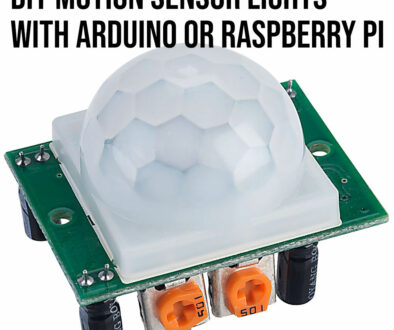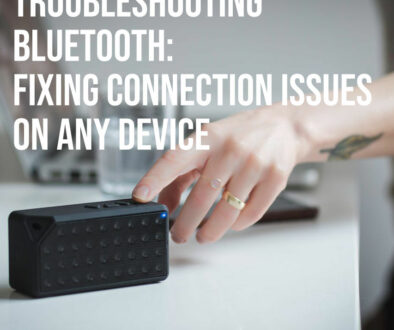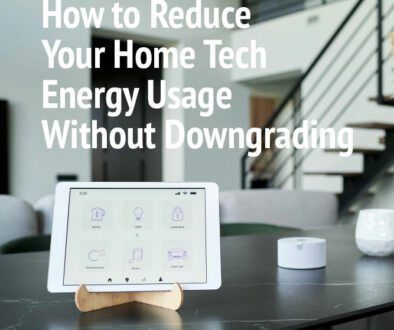How to Extend the Lifespan of Your Portable Battery Power Station
A portable battery power station is an essential investment for emergency preparedness, off-grid adventures, and home backup power. However, like all battery-powered devices, its lifespan is not infinite—without proper care, performance can degrade significantly over time. We look at how to extend the lifespan of your portable battery power station including quick checklist.
A well-maintained power station can last 8-10 years, while improper charging habits, extreme temperatures, and overuse can shorten its lifespan to just a few years. Understanding how these batteries work and following best practices will help maximise efficiency, reduce replacement costs, and ensure reliable power when you need it most.
In this article, we’ll explore practical ways to extend the lifespan of your portable power station, from smart charging habits to proper storage and maintenance.
1. Understanding Battery Degradation: Why Power Stations Lose Efficiency
All portable power stations rely on rechargeable batteries, usually lithium-ion (Li-ion) or lithium iron phosphate (LiFePO4), which degrade over time due to repeated charge and discharge cycles. This battery cycle life is a crucial factor in determining how long your power station remains effective. For instance, a standard lithium-ion battery may last 500-1000 cycles, while LiFePO4 batteries—commonly found in high-end models—can endure 3000+ cycles before experiencing significant capacity loss.
The primary cause of degradation is the breakdown of battery cells, which happens faster when a battery is regularly overcharged, deeply discharged or exposed to extreme temperatures. Each charge cycle slightly reduces battery efficiency, meaning over time, the same unit will hold less charge and run for shorter durations.
Other factors that accelerate battery degradation include pass-through charging (charging the power station while using it), storing the unit with either too much or too little charge, and running power-hungry devices that exceed its recommended wattage. Recognising these causes of battery wear will help you adopt better habits to extend your power station’s lifespan and ensure it remains a reliable source of energy for years to come.

Search Jackery Solar Portable Power Station on Amazon
2. Best Charging Practices for Maximum Battery Life
Proper charging habits play a crucial role in extending the lifespan of your portable battery power station. Many users unknowingly shorten their battery’s longevity by either overcharging, deeply discharging, or using poor-quality charging equipment. Following best practices ensures efficient energy use and long-term reliability.
a. Avoid Deep Discharging
One of the most important charging principles is to avoid deep discharges—letting the battery drain completely before recharging. Most lithium-ion batteries degrade faster when regularly drained below 20%. Instead, aim to keep the battery level between 20% and 80% for everyday use. This reduces strain on the cells and prolongs the overall charge cycle life.
b. Avoid Overcharging
Overcharging can also reduce battery efficiency over time. While most modern power stations have built-in protection to prevent overcharging, keeping them plugged in at 100% for long periods can still generate excess heat and shorten battery life. If the station is not in immediate use, it’s best to unplug it once fully charged.
c. Use the Right Charger
Another key practice is to use the right power source. Always charge your power station with manufacturer-approved adapters or high-quality chargers that provide a stable voltage output. Cheap or off-brand chargers can lead to irregular voltage flow, overheating, and premature battery wear.
d. Avoid Using While Charging (Pass-thru Charging)
Additionally, avoid pass-through charging whenever possible. This is when a power station is being charged while simultaneously powering devices. Although convenient, it puts extra strain on the battery cells, causing faster wear. If pass-through charging is necessary, try to limit it to low-power devices like phones or LED lights.
e. Store at Half Charge
For those storing their power station for long-term emergency use, it’s best to keep the battery level at 50-60% rather than fully charged or empty. This prevents stress on the battery and helps maintain its chemical stability over time. By adopting these best charging practices, you can extend the life of your power station by years and ensure it remains ready whenever needed.

Search Blueletti Portable Power Station on Amazon
3. Proper Storage and Handling for Longevity
How you store and handle your portable power station significantly impacts its longevity. Batteries are sensitive to temperature, moisture, and environmental factors, meaning improper storage can accelerate degradation even when the unit is not in use.
a. Avoid Too Hot or Too Cold
One of the biggest threats to battery health is extreme temperature exposure. Lithium-ion and LiFePO4 batteries operate best in a temperature range of 5°C to 25°C (41°F to 77°F). Storing your power station in areas that experience excessive heat (above 40°C/104°F) or cold (below 0°C/32°F) can cause permanent capacity loss. Avoid leaving your unit in direct sunlight, a hot car, or an uninsulated garage where temperatures fluctuate drastically.
b. Store in Dry Area
Keeping your power station in a dry, ventilated area is also crucial. Excess humidity can lead to internal condensation, which can corrode electronic components and reduce efficiency. If storing in a basement, shed, or other potentially damp areas, consider using a protective case or silica gel packs to absorb excess moisture.
c. Maintain Battery Level
Regular battery level maintenance is essential for units stored long-term. If you plan to store the power station for months without use, check and recharge it every 3-6 months to keep the battery cells active. Leaving it unused for too long at low charge levels can result in permanent battery drain, making it difficult to recharge when needed.
d. Handle With Care
Physical protection is another often-overlooked aspect of maintenance. Avoid dropping or mishandling your power station, as strong impacts can damage internal components and compromise battery performance. If you frequently move your unit between indoor and outdoor locations, consider using a shockproof carrying case to protect it from accidental falls and rough surfaces.
By following these proper storage and handling guidelines, you ensure your portable power station remains efficient, safe, and reliable for years, whether used for daily power needs or emergency preparedness.

Search Anker Portable Power Station on Amazon
4. Managing Power Usage to Reduce Strain on the Battery
To extend the lifespan of your portable battery power station, it’s important to use it efficiently and strategically. Excessive strain from high-power appliances or inefficient energy use can wear out the battery much faster. By managing power consumption wisely, you can preserve battery life and optimise performance.
a. Prioritise Low Power Devices
One of the best ways to minimise strain on your power station is to prioritise low-wattage devices whenever possible. Items such as LED lights, laptops, WiFi routers, and smartphones consume far less energy than high-wattage appliances like space heaters, microwaves, or coffee makers. Running power-hungry devices for extended periods can drain the battery quickly and increase heat buildup, which degrades battery cells over time.
You can find more ideas from the Best Gadgets and Appliances to Run on a Portable Power Station.
b. Staggered Charging
If you need to run larger appliances, stagger their usage rather than powering multiple high-wattage devices at the same time. For example, instead of charging a laptop and running a fan simultaneously, charge the laptop first, then switch to the fan afterward. This prevents overloading the battery and helps maintain stable output performance.
c. Monitor and Track Energy Usage
Many modern power stations include built-in power monitoring features, such as LCD displays or app connectivity, that show real-time wattage consumption. Using these tools, you can track energy usage and make adjustments as needed. If your power station supports eco-mode settings, enabling them can help reduce power waste by automatically shutting off idle devices or lowering energy output.
d. Save Energy
Another simple yet effective way to manage power is to use energy-saving settings on your devices. Lowering your laptop’s brightness, putting devices in power-saving mode, or using a smart plug to cut unnecessary standby power can all contribute to a longer-lasting battery charge.
By reducing unnecessary power strain and adopting energy-efficient habits, you can significantly prolong your battery’s lifespan while getting the most out of each charge cycle.

Search EF ECOFLOW Portable Power Station on Amazon
5. Preventing Overheating and Physical Damage
Overheating is one of the most common causes of premature battery failure in portable power stations. When batteries operate at high temperatures for prolonged periods, the internal components degrade more quickly, leading to reduced efficiency and shorter battery life. Taking steps to prevent overheating and physical damage will help keep your power station running smoothly for years.
a. Keep Unit Ventilated
The first and most crucial step is proper ventilation. When in use, a power station generates heat, especially when powering multiple devices. Avoid placing it in enclosed spaces like inside cabinets, under blankets, or near other heat-generating electronics. Instead, set it up in a well-ventilated area where airflow can naturally cool the unit.
b. Monitor Heat Level
During heavy use, check if your power station has built-in cooling fans and make sure they are functioning properly. If you notice excessive heat buildup, turn off the power station and allow it to cool down before using it again. Some high-end models feature thermal management systems that automatically regulate temperature, but manual monitoring is still recommended for safe operation.
c. Consider Environmental Temperature
Another factor that affects overheating is environmental temperature. Avoid using or storing your power station in extreme heat (above 40°C/104°F) or extreme cold (below 0°C/32°F). High heat accelerates battery degradation, while extreme cold can reduce battery efficiency and make it difficult for the power station to hold a charge.
d. Physical Damage
Physical damage is another silent battery killer. While power stations are built to be durable, accidental drops, water exposure, or excessive pressure can damage internal battery cells and wiring. To protect your unit, consider using a shock-resistant case if you frequently transport it. Additionally, keep it away from water or moisture, as even minor exposure to humidity can cause corrosion and internal short circuits.
e. Routine Maintenance
Routine maintenance can also help prevent overheating and damage. Check the unit’s ports, cables, and exterior casing regularly for any signs of wear or overheating (such as melting or discolouration near ports). If you detect any irregularities, stop using the device and consult the manufacturer before continuing operation.
By keeping your power station cool, well-ventilated, and physically protected, you can avoid unnecessary damage and extend battery life—ensuring it remains a reliable power source for years to come.

Search GROWATT Portable Power Station on Amazon
6. Regular Maintenance and Firmware Updates
Keeping your portable battery power station in top condition requires regular maintenance and software updates. Over time, wear and tear on internal components can reduce performance, but with proper care, you can extend its operational lifespan and ensure it runs efficiently for years.
a. Battery Health Checks
One of the simplest yet most effective maintenance steps is checking battery levels regularly. If you’re using the power station frequently, try to keep it charged between 20-80% to avoid excessive wear. If you’re storing it for emergencies, recharge it every 3-6 months to prevent deep discharge, which can permanently damage lithium batteries.
b. Cleaning and Inspecting Ports
Dust, debris, and grime can accumulate in charging and output ports, causing poor connections and inefficiency. Use compressed air or a dry cloth to clean ports and vents periodically. Avoid using liquids or wet wipes, as moisture can damage internal components.
c. Firmware Updates
Many modern portable power stations come with firmware update capabilities. Manufacturers release updates to improve battery management, enhance safety features, and fix minor bugs that might affect performance. If your model supports software updates via USB or Bluetooth apps, it’s a good idea to check for updates every few months to ensure optimal performance.
d. Monitoring Charge Cycle Count
Most lithium-ion and LiFePO4 batteries have a limited number of charge cycles before their capacity starts to decline. Some manufacturers provide apps or built-in displays that let you check battery cycle counts. If your power station is approaching its cycle limit, consider replacing the battery (if possible) or preparing for an upgrade.
By incorporating routine maintenance and software updates, you can keep your power station running at peak performance, reduce the risk of unexpected failures, and maximise its lifespan.

Search ECOFLOW Portable Power Station on Amazon
7. When to Replace or Upgrade Your Power Station
Even with excellent care and maintenance, portable power stations don’t last forever. Over time, you may notice a decline in performance, slower charging, or reduced battery capacity. Knowing when to replace or upgrade your unit ensures that you always have a reliable power source when you need it most.
Signs It’s Time for a Replacement
Significant reduction in battery life – If your power station doesn’t hold a charge as long as it used to, it could be due to battery aging. Most lithium-ion batteries start to degrade after 500-1000 cycles, while LiFePO4 batteries can last 3000+ cycles before seeing a major decline.
Inconsistent power output – If devices randomly shut off while connected or your power station struggles to maintain a steady power flow, the internal components might be wearing out.
Overheating issues – If your power station frequently overheats even under normal loads, it could be a sign of battery degradation or faulty cooling systems.
Outdated technology – If your current power station lacks key features such as solar charging, fast-charging USB ports, or app control, an upgrade may provide better efficiency and longer battery life.
Choosing the Right Upgrade
If you decide to replace your power station, consider upgrading to a higher-capacity or more efficient model. Look for features like:
- LiFePO4 batteries – Longer lifespan and better thermal stability compared to standard lithium-ion.
- Expandable battery packs – Some power stations allow you to add extra battery modules for more capacity.
- Faster charging technology – Look for models that support solar input, fast AC charging, and car charging.
- Smart app monitoring – Allows you to track battery life, charge cycles, and power usage remotely.
By recognising when your power station needs an upgrade, you can avoid power failures, increase efficiency, and ensure you always have a dependable energy source.
Circling Back
A portable battery power station is a valuable investment that provides backup power, off-grid energy solutions, and emergency preparedness. However, its longevity depends on how well you maintain and use it. By following best practices—such as proper charging habits, efficient power usage, safe storage, and routine maintenance—you can significantly extend its lifespan and keep it functioning at peak performance for years to come.
Avoiding deep discharges, excessive heat, overloading, and pass-through charging will reduce strain on the battery and prevent premature wear. Keeping your power station clean, ventilated, and regularly updated ensures it remains efficient and safe to use. If you notice declining performance or outdated technology, upgrading to a higher-capacity or LiFePO4 model can provide better reliability and longer-lasting power.
By taking a proactive approach to maintenance and energy management, your power station will continue to serve as a dependable and eco-friendly power source, whether for daily convenience, outdoor adventures, or emergency situations. With proper care, you can maximise your investment and always have power when you need it most.










